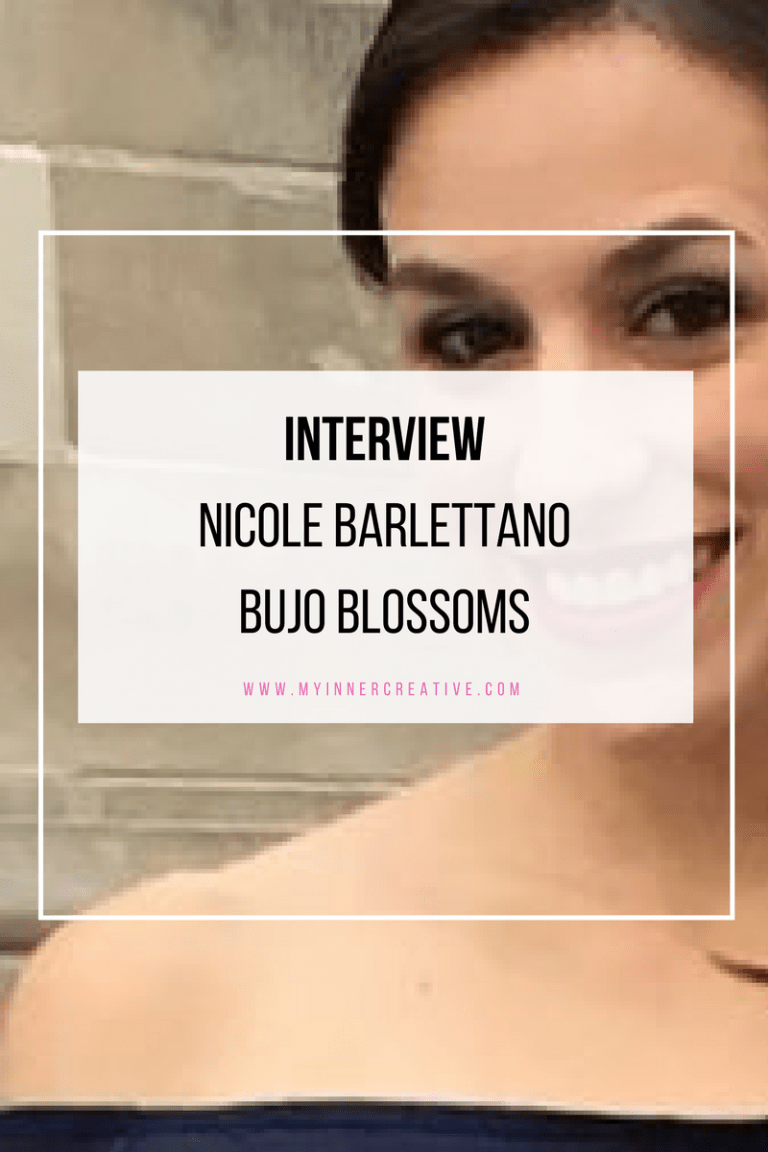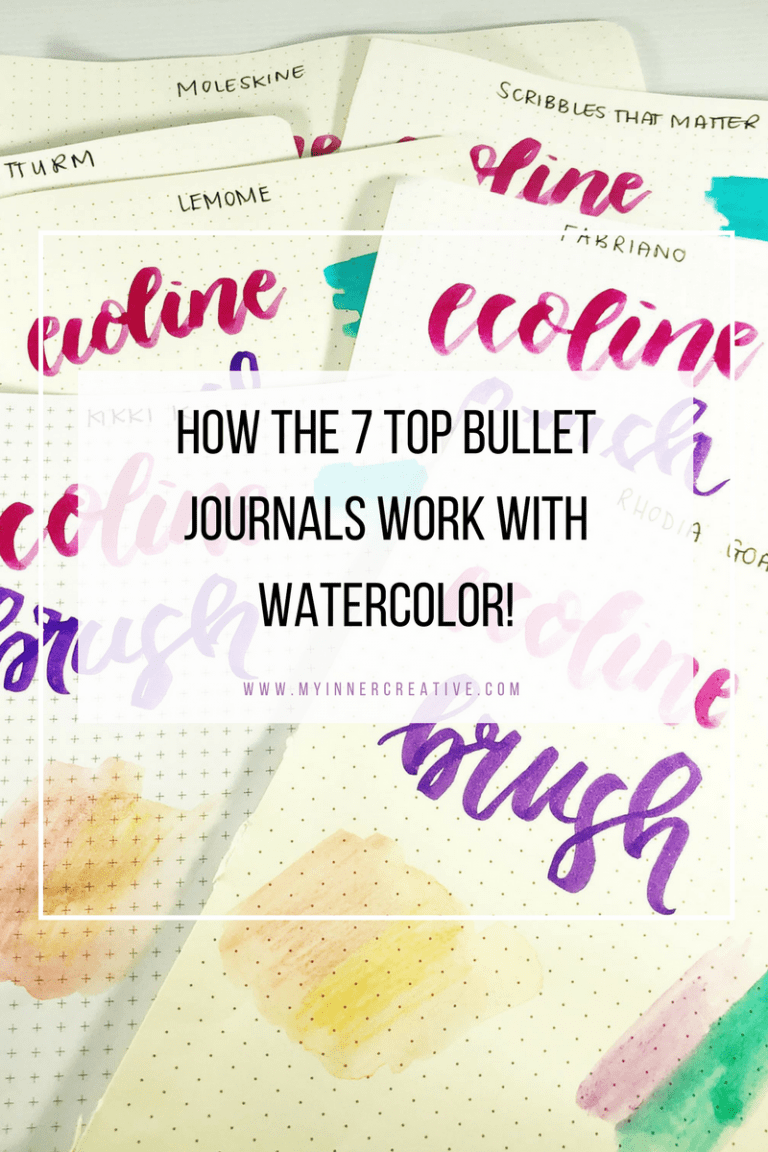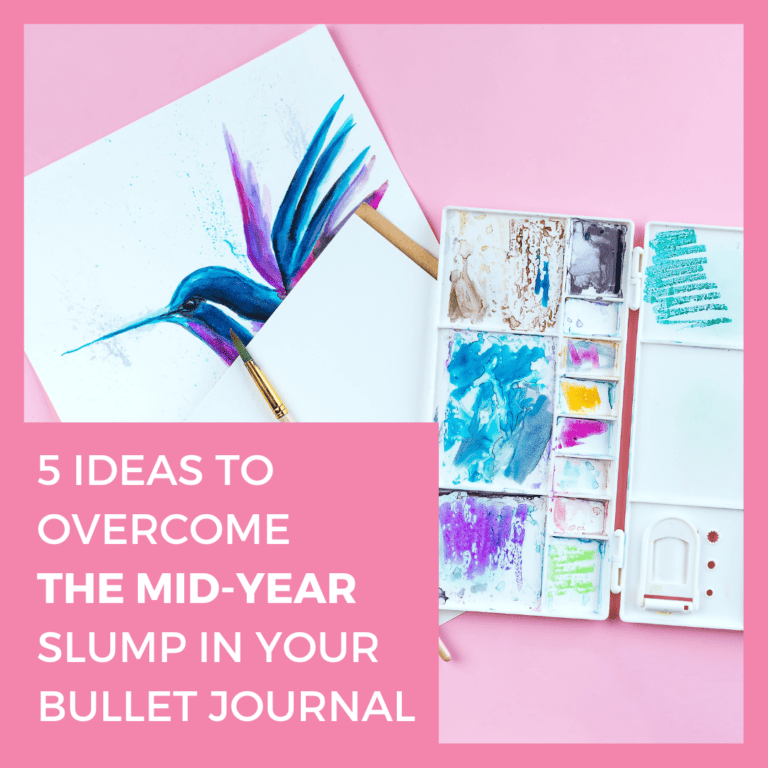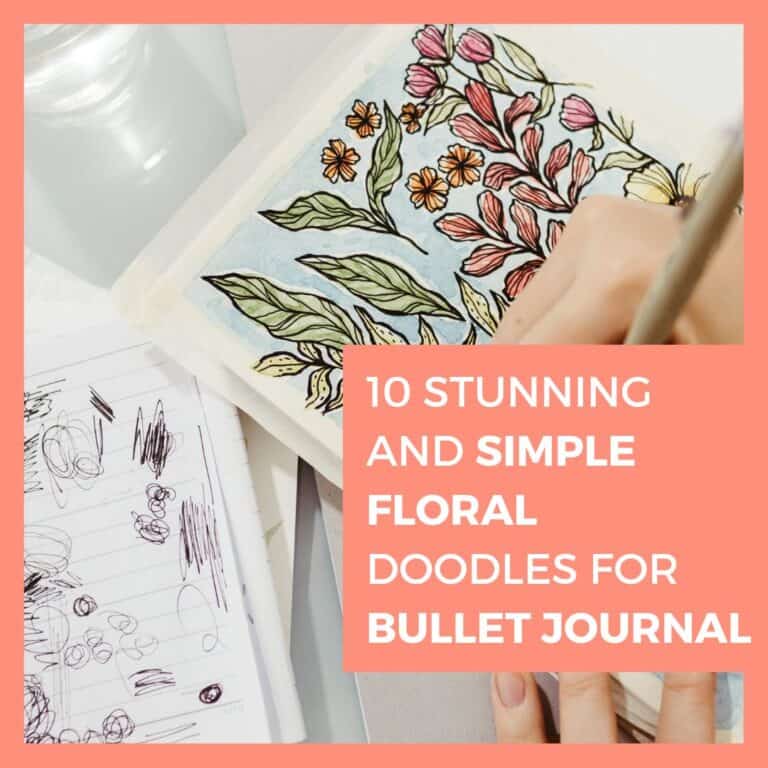Creativity vs copyright with your bullet journal – 3 Tips to help you stay legal
In the world of bullet journaling, where personal expression knows no bounds, a nuanced dance between creativity and copyright emerges. This blog post delves into the delicate balance one must strike when crafting a unique bullet journal while respecting intellectual property rights.
I know for a fact that this post is going to ruffle some feathers, and thats ok! Maybe its time to ruffle feathers, because essentially I think its important that we are all on the same page about Copyrights and Creativity! So lets get straight into talking about copyright vs creativity with your bullet journal .
Now I realise that I may sound like a hypocrite later in this post – where I blatantly use peoples pictures without permission. You can decide if that sits well with you or not, but for me, I am ok with it.
Let’s start right at the top of this; Bullet Journaling. The term Bullet Journal, Bujo etc are copy a copyright of Ryder Carroll. While I can blog about it, and talk about the concept and share the process, I cannot claim the system as my own. If I want to sell something around Bullet Journals, then it needs to be reworded as to not cause confusion to the original brand. Which is tricky considering everyone uses the term Bujo and the likes. This is why we like to call it To Dot listing, or bullet planner, or dot planning when we refer to it in a business sense.
1. Understanding Creativity in Bullet Journaling:
Creativity lies at the heart of bullet journaling, transforming it from a mere organizational tool into a dynamic platform for personal expression. This section explores how you can infuse your bullet journal with creativity while staying true to your unique voice.
Embracing the Essence of Creativity:
Bullet Journaling as a Platform for Self-Expression A bullet journal is more than just a collection of to-do lists; it’s a canvas that welcomes your thoughts, emotions, and aspirations. Use your journal as a safe space to pour out your heart, experiment with different styles, and document the journey of your life. The blank pages eagerly await your stories, dreams, and reflections, making bullet journaling a therapeutic outlet for channeling creativity.
Tailoring Layouts, Doodles, and Themes to Reflect Your Personality
Your bullet journal is an extension of yourself, and its pages should mirror your personality, interests, and aesthetics. Experiment with different layouts that resonate with your organizational needs while maintaining a touch of creativity. If you’re a minimalist, go for clean lines and simple designs. If you’re more inclined towards whimsy, incorporate playful doodles and intricate borders. Themes can range from nature-inspired spreads to pop culture references, offering endless possibilities for personalization.
Incorporating Artistic Elements to Elevate the Visual Appeal of Your Journal
Artistic elements are the spice that flavors your bullet journal’s visual appeal. Consider integrating watercolor washes, calligraphy, hand-lettering, washi tape, and decorative stickers to enhance the overall look and feel of your pages. These elements not only make your journal more visually engaging but also create an immersive experience that makes flipping through its pages a delight.
Remember, there’s no right or wrong way to be creative in your bullet journal. Allow yourself to make mistakes, experiment with new techniques, and embrace imperfections. The act of putting pen to paper, expressing yourself authentically, and allowing your creativity to flow is what truly matters in the world of bullet journaling.
2. Navigating Copyright Basics:
Copyright is a crucial aspect of creative expression that warrants careful consideration within the realm of bullet journaling. Understanding its fundamental principles helps you respect the rights of other creators while making the most of your own originality.
A Primer on Copyright: What it Covers and How it Applies to Creative Works
Copyright is a legal framework that grants creators exclusive rights over their original works, such as literary, artistic, musical, and other intellectual creations. It covers a wide range of works, including writings, artwork, photographs, designs, and more. In the context of bullet journaling, copyright protection extends to your original doodles, layouts, and written content. Familiarize yourself with copyright duration, which varies by jurisdiction, and be aware that the moment you create something original, it’s automatically protected.
Recognizing Copyrighted Material: Fonts, Illustrations, and Designs
When sourcing external materials for your bullet journal, it’s important to recognize copyrighted elements. Fonts, illustrations, and design templates often carry copyright protection. Commercial stickers, digital assets, and clip art may come with usage restrictions. Always check licenses and terms of use before incorporating these materials into your journal. Some resources might require attribution or payment for commercial use.
Avoiding Direct Copying: Learning to Draw Inspiration Without Infringing on Copyrights
While it’s tempting to replicate something you’ve seen in another bullet journal, direct copying can lead to copyright infringement. Instead, use existing works as inspiration to create something uniquely your own. Study layouts, color schemes, and design concepts from various sources, and then add your personal touch. Incorporate different elements, adjust proportions, and combine multiple inspirations to craft a new, original creation.
What is copyright?
By definition, is the exclusive and assignable legal right, given to the originator for a fixed number of years to print, publish, perform, film, or record literary, artistic, or musical material. In summary, don’t use peoples things without permission but you can talk or create based on the same concepts.
So how does this translate to Instagram? Because someone has posted it in an open content , isn’t it then a “free for all”?
What does instagram say about creativity vs copyright with your bullet journal
What instagram says:
In most countries, copyright is a legal right that protects original works of authorship. Typically, if you create one of those works, you obtain a copyright from the moment you create it. Copyright covers a wide variety of types of works, including:
- Visual: videos, movies, TV shows and broadcasts, video games, paintings, photographs
- Audio: songs, musical compositions, sound recordings, spoken word recordings
- Written: books, plays, manuscripts, articles, musical scores
Remember, only original works are eligible for copyright protection. To be original enough for copyright protection, a work needs to be created by the author themselves, and must have some minimal amount of creativity.
Generally, things like names, titles, slogans or short phrases aren’t considered to be original enough for copyright protection. For example, the symbol “+” is likely not subject to copyright, but a painting full of shapes and colors arranged in a unique pattern is likely protected under copyright.
Copyright doesn’t generally protect facts or ideas, but it may protect the original words or images that express a fact or idea. This means that you may be able to express the same idea or fact as another author, as long as you don’t copy that author’s way of expressing that idea or fact. For example, a playwright may not be able to copyright the idea of a man waking up to repeat the same day over and over again, but the script for a play or movie expressing that idea could be subject to copyright.
So what does this mean for us? Surely at some point there is going to be some over lap? There is only som many ways we can draw a straight line for our planner or spreads, there are only so many trackers we can create, and there are only so many times we can use the word Monday!
In one article on “Elite Daily” the author states about instagram;
So you’ve painted, photographed or crafted something beautiful and you’re looking for a way to share it with the world. If you’re interested in having it stolen or copied, there’s one sure place to go.
He got this pedantic about instagram infringements after a picture of his nephew was taken and used.
We all know that copying images and calling them your own is wrong, but it is dead easy to copy and post and with over 800 million accounts, spotting someone who has snapped up your worth might be hard. As a user generated content account, we make sure that we credit the original creator of the content, and if we happen to get that wrong, we change it immediately, doesn’t take much, a simple comment or DM. But do we have permission? Simply put, no. Posting, hashtagging, and sharing images on social media does not give up your copyright. It is still up to you who uses your image. You get to decide who reposts your image and who doesn’t.Sometimes we want our images to be reposted by specific accounts of big brands with lots of followers in the hopes of gaining more followers ourselves. That social currency is enough of a tradeoff where we allow someone to use work without monetary compensation. But there is a thing called implied consent, hashtags and tagging.Hashtags evolved on Twitter as a way to group tweets. They soon became the de facto method of keywording content, and users have used them literally (e.g. #eating, #chocolate) and ironically (e.g. #ihateitwhenthathappens). For young millenials and Generation Z, hashtags are a natural (and sometimes subconsciously applied) form of language. Whatever the case, hashtags (and geotags) are effective discovery mechanisms. But does a hashtag imply consent?Legally speaking, a lack of case law means the jury’s out. So by tagging us and #ing #theartofbujo you give us implied consent to use you work, but because of these issues around the laws, we have taken to commenting on the photo we want to use in our feature, and then requesting the expressed consent for use. We would never want someone to feel disenfranchised with us sharing their work. If we have missed one however, and you spot it, let us know in the first instance 🙂
What about @theartofbujo? We repost content! Does that mean I am stealing work?
3. Originality in Your Bullet Journal:
The heart of your bullet journal lies in your originality—your ability to channel your thoughts and experiences into pages that resonate with your personal narrative. This section explores the beauty of embracing originality and making your journal a reflection of your true self.
The Thrill of Original Creations:
Designing Layouts from Scratch Designing your layouts from scratch offers a thrilling opportunity to fully express your creativity. Instead of relying on pre-made templates, visualize how you want each page to look based on your needs and preferences. Experiment with various arrangements, incorporate hand-drawn elements, and create unique grids that cater to your bullet journal’s purpose.
Sketching Your Ideas:
Turning Concepts into Unique Doodles and Artworks Your doodles and artworks are the visual poetry of your bullet journal. Rather than tracing or copying existing designs, let your imagination run wild. Sketch out your ideas before finalizing them in your journal. This process allows you to refine your concepts, explore different styles, and ensure that your drawings are truly your own.
Writing Your Narratives:
Crafted Prose and Poetry That Embody Your Thoughts Originality extends beyond visuals—it encompasses your written words as well. Whether you’re jotting down daily reflections, setting goals, or weaving poetic verses, infuse your writing with your unique voice. Share your experiences, thoughts, and emotions in a way that only you can. Your words have the power to create a deeper connection between you and your journal.
In the realm of bullet journaling, originality is a gift you offer to yourself. Each stroke of the pen, each thought captured on paper, contributes to a journal that is as distinctive as your fingerprint. Embrace your creativity, honor your inspirations, and weave them into a tapestry of genuine, heartfelt originality.
Can copying work can boost creativity? Can copying really help me be more creative?
In a university study compiled wiht 30 university students, the concept of copying very creativity was covered. One group was asked to create an original piece of work each day, and the second group was asked to create an original piece of work on the firs day, on the second day they were asked to copy a piece of work, and on the third day, again requested to create an original piece of work. They then had professional artists asses the two groups work, what they found was that the work created by the group that had copied was far more creative than the group that had not copied, and that they showed far more experimentation. Where as the group that didn’t copy merely honed their skills and created more realistic impressions of the art. In another study completed Okada and Ishibashi’s research found, however, that in certain circumstances, asking people to copy examples of others can ultimately result in more creative works, rather than providing them with little to go on.
What this means that quite often imagination is constrained by a lack of exposure to other possibilities or concepts. Copying pushes people to compare styles and try new things, and ultimately generates new ideas.
Does all of this mean if I use a picture, am I breaching copyright with my bullet journal
Isn’t imitation the highest form of flattery? Yeah Nah. Bullet journaling isn’t something new and with over 1.8million #bulletjournal posts, there is bound to be some overlap.
More and more certain journalists have an artistic style that is really identifiable or recognisable. So at the end of the day, chances are high that you are going to get caught out for this. There is a massive community of journalists who are watching out for one another, because keep in mind, while the concept of bullet journaling might not be unique, peoples art and interpretation of it is. So:
Don’t Copy, you will get caught at some stage.
There is also a strong difference between “using an idea” and blatantly copying someone’s work. If you are using the same colours, the same words and the same details, that is copying, but if you are using a spread to inspire yours with your own twist on it? Well….that’s awesome and we would love to see it. But give credit to the person you found the inspiration from. And if you cannot find the person to give them credit, state that!
“Was really inspired by a post I saw on (Instagram/Pinterest) but cannot find the original poster! Hopefully they like the spin I’ve put on it! Please tag them if you know them!”
[YUMPU epaper_id=60343309 width=”512″ height=”384″]
Earlier this month, it came to light that a journalist and studygrammer was copying to grow their large following, I have highlighted the issues in the above document. The account gets a number of sponsors, products etc, all from copied content that is often taken down due to infringements. I requested for them to comment, but due to the fact they are 14 and probably lapping up sponsorship and engagement (you might want to read how Instagram creates narcissists) i would have at least expected them to give their side of the story. My opinion is that if this account holder “made a mistake” it would have happened once, but the regularity that its happening with, tells me its just blatant disregard for anyone else.
Building a bullet journal Community:
Within the vibrant realm of bullet journaling, community plays a vital role in inspiring, learning, and growing together. This section explores how you can actively contribute to and benefit from the bullet journaling community while fostering a respectful and inclusive environment.
Fostering an Inclusive Space: Encouraging Creativity While Respecting Copyright Community thrives when it’s built on a foundation of respect. Encourage fellow enthusiasts to express themselves creatively while remaining mindful of copyright boundaries. Encourage artists to share their original work, and emphasize the importance of proper attribution and ethical sourcing. Creating an environment where everyone’s creativity is celebrated, protected, and valued contributes to a sense of belonging.
Sharing Inspiration: How to Spark Creativity Without Stepping on Copyrights Sharing is a cornerstone of the bullet journaling community. While it’s wonderful to inspire others, it’s essential to do so in a way that respects copyright and ethical considerations. Instead of replicating designs, encourage others to take inspiration from your layouts, themes, and concepts. Highlight the transformative elements that make your work unique, and invite others to put their personal spin on similar ideas. By sharing in this manner, you empower others to explore their creativity while respecting the rights of creators.
Learning from Others: Gaining Insights from Fellow Bullet Journal Enthusiasts The beauty of a community lies in the exchange of ideas and insights. Engage in conversations, ask questions, and seek advice from fellow bullet journal enthusiasts. Whether you’re discussing layout ideas, techniques, or tools, you’re tapping into a wellspring of knowledge. Be respectful of others’ experiences and always give credit when implementing ideas you’ve learned from the community. As you learn and grow together, your own creativity will be enriched by the collective wisdom.
Building a bullet journaling community is about mutual inspiration, respect, and shared growth. Fostering inclusivity, encouraging creativity, and respecting copyright boundaries create an environment where every member feels valued. By sharing inspiration responsibly and engaging in meaningful interactions, you contribute to a collective journey of creativity, self-expression, and learning that uplifts and enriches everyone involved.
4. Originality in Your Bullet Journal:
Originality is the soul of your bullet journal, and it’s in the act of creating something uniquely yours that you truly immerse yourself in the art of self-expression. In this section, we delve into the three key facets of originality in your bullet journal: designing layouts, sketching ideas, and crafting narratives.
The Thrill of Original Creations: Designing Layouts from Scratch Designing layouts from scratch is akin to molding clay with your hands, shaping it according to your vision and purpose. Start by considering the function of each page: Is it a weekly planner, a mood tracker, or a travel journal? Allow your needs to guide your layout’s structure, and then let your creativity flourish. Experiment with different grids, borders, and whitespace. Combine hand-drawn elements, stickers, and washi tape to create a symphony of visual interest that’s uniquely tailored to your personality and preferences. Each page becomes a canvas for your imagination to roam free.
Sketching Your Ideas: Turning Concepts into Unique Doodles and Artworks Sketching is where your ideas come to life before they find their place in your bullet journal. These sketches are the blueprints of your creativity. When translating concepts into doodles and artworks, embrace imperfection and authenticity. Let your hand flow with the rhythm of your thoughts, and let go of the pressure for flawless lines. Sketch out your ideas, refine them as needed, and then transfer them onto your journal pages. The process of sketching allows you to infuse each element with your personal touch, making your pages a visual representation of your imagination.
Writing Your Narratives: Crafted Prose and Poetry That Embody Your Thoughts The power of the written word is undeniable, and your bullet journal is a haven for your thoughts, reflections, and stories. Craft your narratives with a voice that’s uniquely yours. Whether you’re writing daily entries, setting goals, or reflecting on your journey, let your writing capture your essence. Paint vivid pictures with words, creating scenes that transport you back to moments you’ve experienced. Write in a way that feels natural to you, whether it’s poetic and introspective or direct and pragmatic. Your narratives are the threads that weave the tapestry of your life within the pages of your journal.
In the realm of bullet journaling, originality isn’t just a goal—it’s a journey of self-discovery. The thrill of designing, sketching, and writing original content allows you to connect with your inner creativity and authenticity. Each element you add to your journal becomes a brushstroke in the masterpiece of your life. Embrace the uniqueness of your ideas, the authenticity of your sketches, and the depth of your narratives as you continue to explore the art of self-expression within the pages of your bullet journal.
5. Ethical Sourcing and Attribution:
In the world of bullet journaling, where creativity is fueled by inspiration from various sources, practicing ethical sourcing and proper attribution is essential. This section explores how you can responsibly incorporate external resources while respecting the rights of creators and fostering a community of mutual appreciation.
Incorporating External Resources: Using Third-Party Stickers, Templates, and Designs Bullet journaling is a journey that can be enriched by incorporating third-party resources. Stickers, templates, and designs created by other artists can add depth and variety to your journal. These resources can save time and offer new creative perspectives. When using them, consider how they complement your personal style and enhance your pages. However, ensure that these resources come from reputable sources, and always review the terms of use to understand any restrictions on their usage.
Giving Credit Where It’s Due: Properly Attributing Copyrighted Materials When using external resources, especially copyrighted materials, it’s crucial to give credit to the original creators. If you’re using a specific design, illustration, or font created by someone else, include a proper attribution. This can be done by mentioning the creator’s name, linking to their website or social media profile, or following any attribution guidelines they provide. Proper attribution not only respects the efforts of creators but also encourages a culture of openness and transparency within the bullet journaling community.
Seeking Resources with Open Licenses: Exploring Creative Commons and Public Domain Content To ethically source materials for your bullet journal, consider exploring resources with open licenses. Creative Commons licenses, for instance, allow creators to share their work under specific terms, granting users the right to use, modify, and share the content while adhering to the license’s conditions. Public domain content, on the other hand, is free from copyright restrictions and can be freely used for various purposes. By seeking out open-licensed or public domain resources, you can confidently incorporate external elements without worrying about copyright infringement.
Remember, ethical sourcing and proper attribution are not only about legality but also about showing appreciation for the creative community and fostering an environment of mutual respect. As you build your bullet journal, strive to strike a balance between using external resources to enhance your creativity and acknowledging the hard work of fellow creators. By doing so, you contribute positively to the artistic ecosystem of bullet journaling while creating pages that reflect your unique identity and values.
6. Transformative Work and Fair Use:
In the world of bullet journaling, the concepts of transformative use and fair use play a significant role in navigating the fine line between creativity and copyright compliance. This section explores how you can ethically incorporate existing works into your bullet journal while respecting the principles of transformation and fair use.
The Concept of Transformative Use: Adding Personal Flair to Existing Designs Transformative use refers to the practice of taking existing works and adding your unique touch to create something new and original. In bullet journaling, this could involve adapting templates, modifying designs, or combining elements from various sources to suit your journal’s theme and purpose. By infusing your personal creativity, style, and narrative into these adaptations, you’re not merely copying but creating something fresh and distinct.
Applying the Fair Use Doctrine: When and How It Applies to Creative Projects Fair use is a legal doctrine that allows limited use of copyrighted material without permission from the copyright holder, under specific circumstances. While fair use is a complex and nuanced concept, bullet journaling can sometimes fall within its parameters. Fair use factors include the purpose and character of the use (e.g., whether it’s transformative), the nature of the copyrighted work, the amount used, and the effect on the market. If you’re using copyrighted material for purposes like commentary, criticism, education, or parody, and your use is transformative and doesn’t negatively impact the market for the original work, fair use may apply.
Balancing Transformation and Infringement: Avoiding Derivative Works That Cross the Line While transformative use and fair use can be powerful tools for creativity, there’s a delicate balance to maintain. Transformation doesn’t grant a free pass to create derivative works that closely mimic the original. It’s crucial to ensure that your work remains distinct and doesn’t become a substitute for the original. Aim to create something that showcases your own style, adds value beyond the original, and doesn’t undermine the market for the copyrighted material. Strive to be inspired by existing works while contributing your unique perspective.
As you explore transformative use and fair use in your bullet journal, approach it with mindfulness and awareness. Be willing to adapt, modify, and remix existing designs while always keeping your originality at the forefront. By understanding the boundaries, respecting creators’ rights, and striving for genuine innovation, you can create bullet journal pages that are both creatively fulfilling and ethically responsible.
3 Tips to keep yourself legal with your bullet journal:
1. Make sure you always ask permission – if you are a sharing account (like ours), make sure permission is implied in your bio with the appropriate hashtag and the tag.
2. If you use someone’s work for inspiration, share it with them first, before you post it publicly and then make sure to give them the appropriate credit.
3. If you are copying to try a new technique, just don’t post it to Instagram or other social media until you have created enough with it (at least a 35% change), for it NOT to be a direct copy. Also if you are going to copy – don’t use a public hash tag like #bulletjournal for everyone to see your copying handy-work.
7. DIY vs. Commercial Resources:
The choice between crafting your bullet journal content from scratch or incorporating commercial resources introduces a dynamic tension in the world of bullet journaling. This section explores the considerations when weighing the merits of DIY (do-it-yourself) versus utilizing pre-made elements, and how to strike a balance between the two.
Handmade vs. Pre-made: Pros and Cons of Crafting Everything from Scratch Creating your bullet journal entirely from scratch offers a profound connection to your creativity. Every line, every stroke, and every word originates from your imagination. Pros include complete artistic control, a deeply personal touch, and the satisfaction of seeing your ideas manifest. However, the process can be time-consuming and mentally demanding. The DIY approach demands a substantial investment of time, energy, and skill.
Supporting Artists: Choosing Ethically-Produced Commercial Resources Commercial resources, such as stickers, templates, and designs, offer convenience and variety, saving time and effort. While some commercial resources are mass-produced and ethically questionable, many artists pour their creativity into these items. By supporting artists, you contribute to their livelihoods and artistic growth. Look for resources from reputable creators who value transparency, quality, and ethical production. Your bullet journal benefits from their expertise, and you become part of a community that values and uplifts creativity.
Customizing Commercial Materials: Infusing Them with Your Unique Touch Commercial resources don’t need to dictate your creativity; instead, they can serve as starting points for your artistic journey. Infuse these resources with your personal flair. Embellish pre-made elements with hand-drawn details, modify layouts to suit your style, or integrate them seamlessly into your overall theme. Customization bridges the gap between convenience and originality. While you save time by using pre-made elements, your customization adds layers of authenticity.
In your bullet journaling adventure, consider your personal goals, time constraints, and creative aspirations. Opt for a DIY approach when you seek a direct channel to your creativity and wish to craft a deeply personal experience. Embrace commercial resources when you want to save time, access diverse design elements, or support the artistic community. Ultimately, the choice is yours, and it’s a testament to the fluidity and adaptability that makes bullet journaling such a rewarding and evolving endeavor.
8. Protecting Your Own bullet journal Work:
As you pour your creativity into your bullet journal, it’s essential to safeguard your original content while maintaining a balance between sharing and maintaining your rights. This section explores how you can protect your creative output, understand your rights, and foster a responsible sharing environment.
Treasuring Your Creative Output: Steps to Safeguard Your Original Bullet Journal Content Your bullet journal is a tangible expression of your creativity and emotions. To protect your work, consider keeping digital backups of your journal pages or taking photographs of your layouts. In the digital age, where loss or damage can occur, these backups ensure your creative efforts are preserved. Additionally, consider journaling about your creative process, thoughts, and intentions. This documentation can serve as evidence of your originality if ever needed.
Understanding Your Rights: How Copyright Applies to Your Creations As a creator, you automatically hold the copyright to your original bullet journal content the moment it’s created and fixed in a tangible form. This means you have the exclusive rights to reproduce, distribute, and display your work. Understanding these rights empowers you to make informed decisions about sharing and protecting your content. While copyright protection is automatic, you might also consider marking your journal with a copyright notice (e.g., © [Your Name] [Year]) to reinforce your ownership.
Sharing Responsibly: Setting Boundaries While Still Inspiring Others Sharing your bullet journal creations can inspire and connect you with a vibrant community. However, it’s crucial to balance sharing with maintaining your rights. Consider what you’re comfortable sharing publicly and what you prefer to keep private. If you’re sharing online, be mindful of platforms’ terms of use and privacy settings. Watermarking your images or including copyright notices can communicate your ownership to viewers. Engage with comments and feedback, but be cautious about sharing personal information.
Striking the right balance between protecting your creative output and sharing your passion can be a rewarding challenge. Treasure your originality by taking proactive steps to safeguard your work and understanding your rights as a creator. Be deliberate in your sharing, allowing yourself to inspire while retaining control over your content. By nurturing a respectful and responsible approach to sharing, you create a space where your creativity thrives while respecting the boundaries that maintain the integrity of your work.
What are some good examples of copyright work in bullet journal circles?
Some people we would love to share again because they are just amazing and so great at giving credit where credit is due!
The lovely Bujo posted this great heart of Instagram post, and Ida Camilla took it and was inspired by it and gave the appropriate credit!
Example 1:
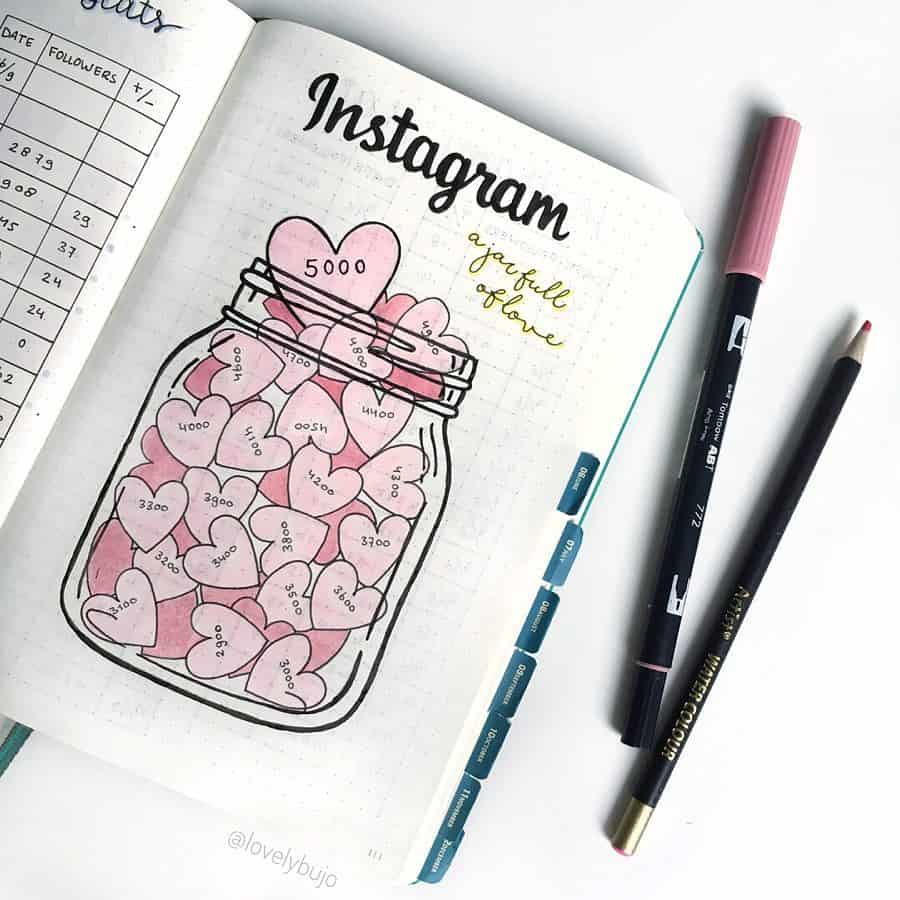
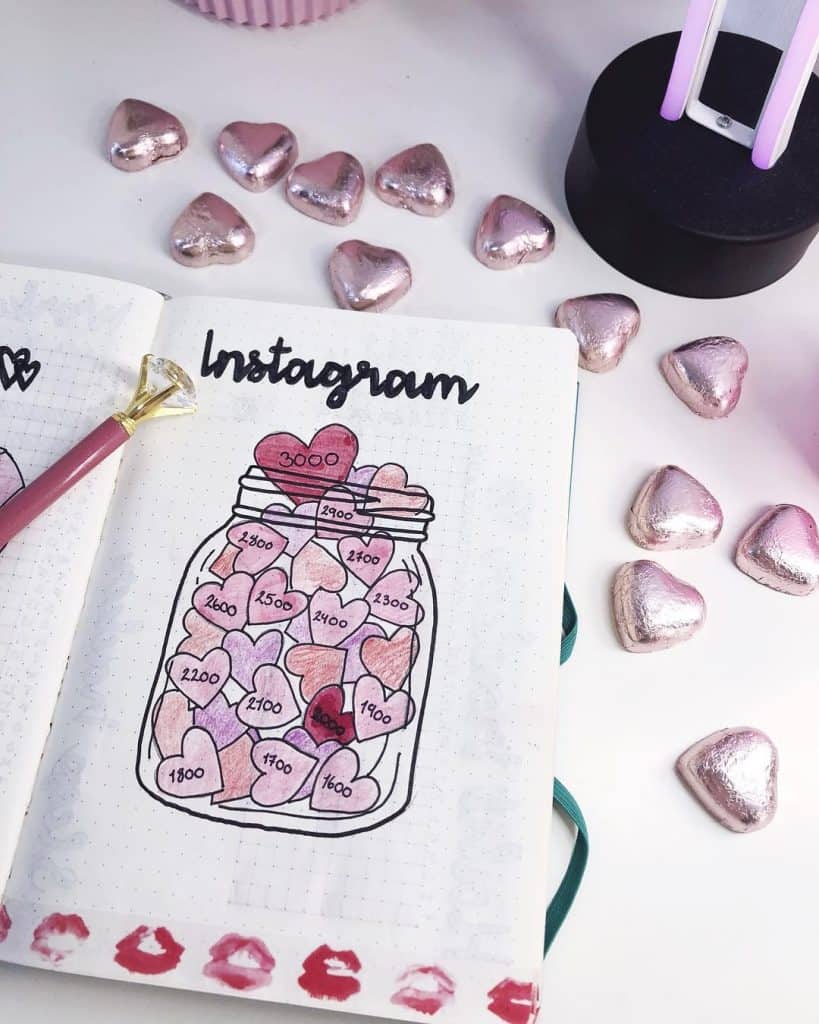
Example 2:

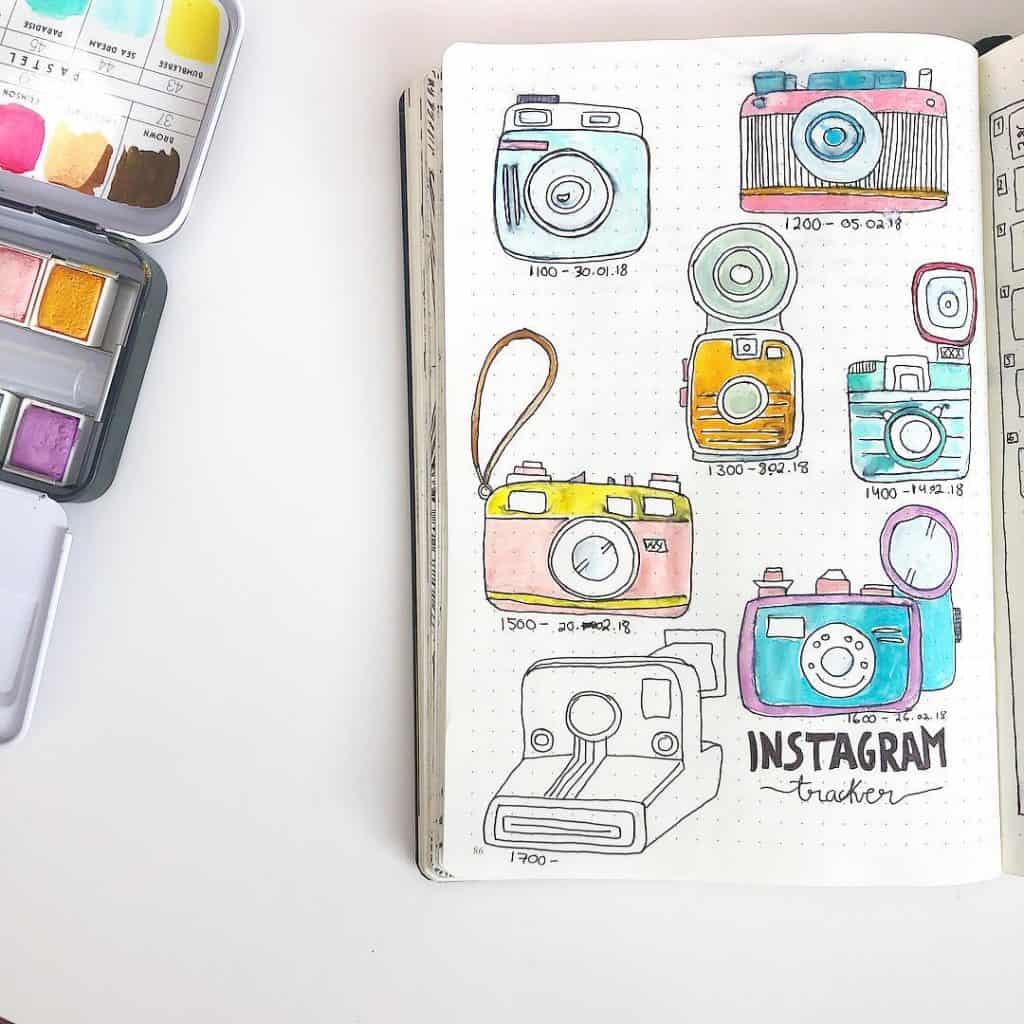
Example 3:
One of my favorite examples is this memory spread by Kim over at @bumblebujo who got inspiration, and credited her inspiration to Emma from Bujobug and her adorable gratitude tracker. This then gave rise to Juians gorgeous red memory spread, the adorable Kimi making a minimalist version and a pretty blue version from Bullet Journal Noob. All of these give reference to the original creator.
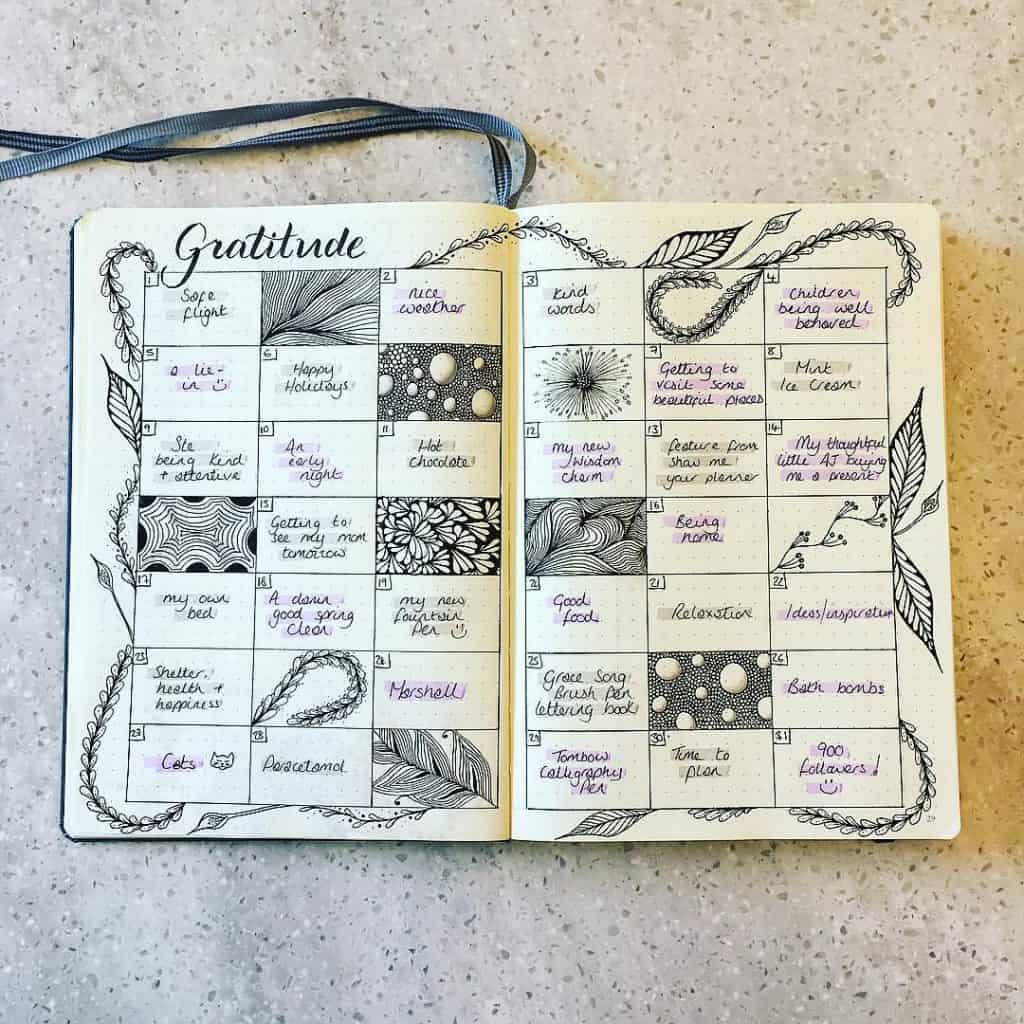
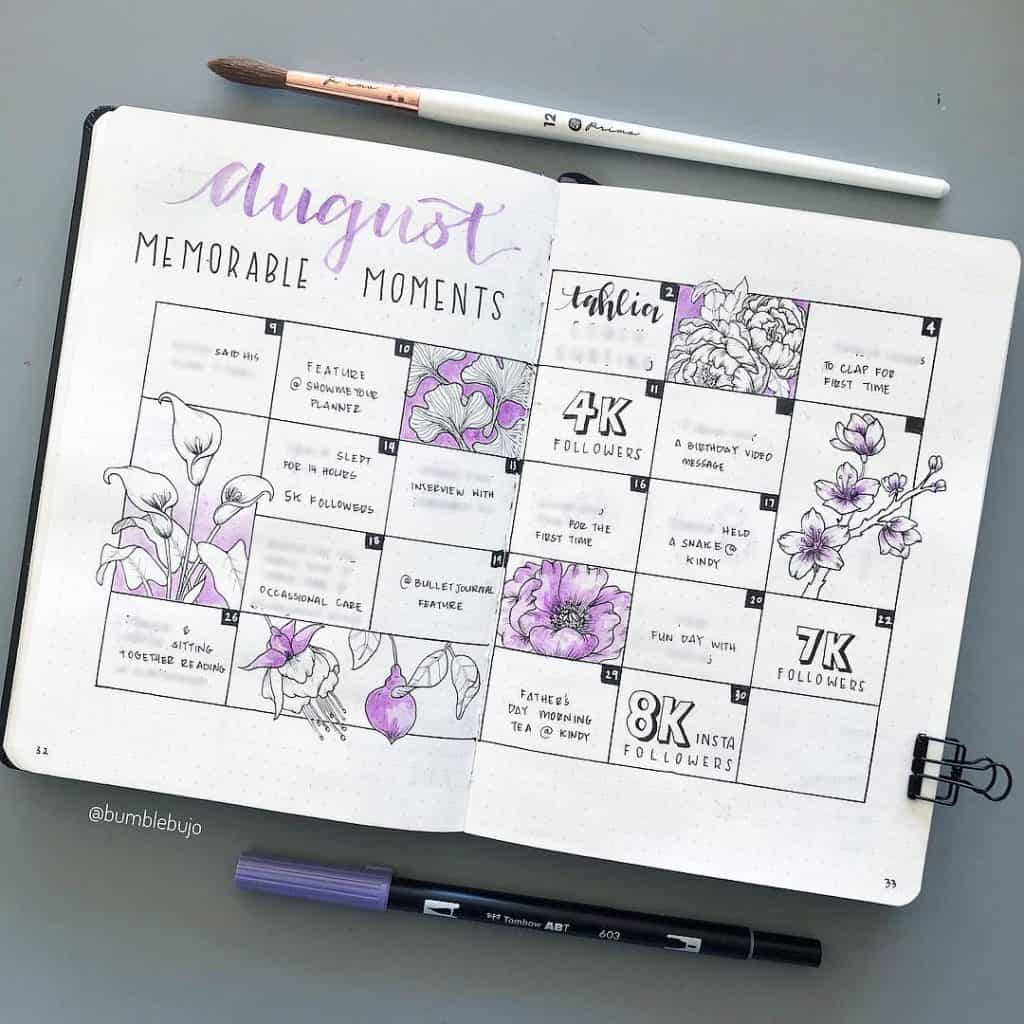
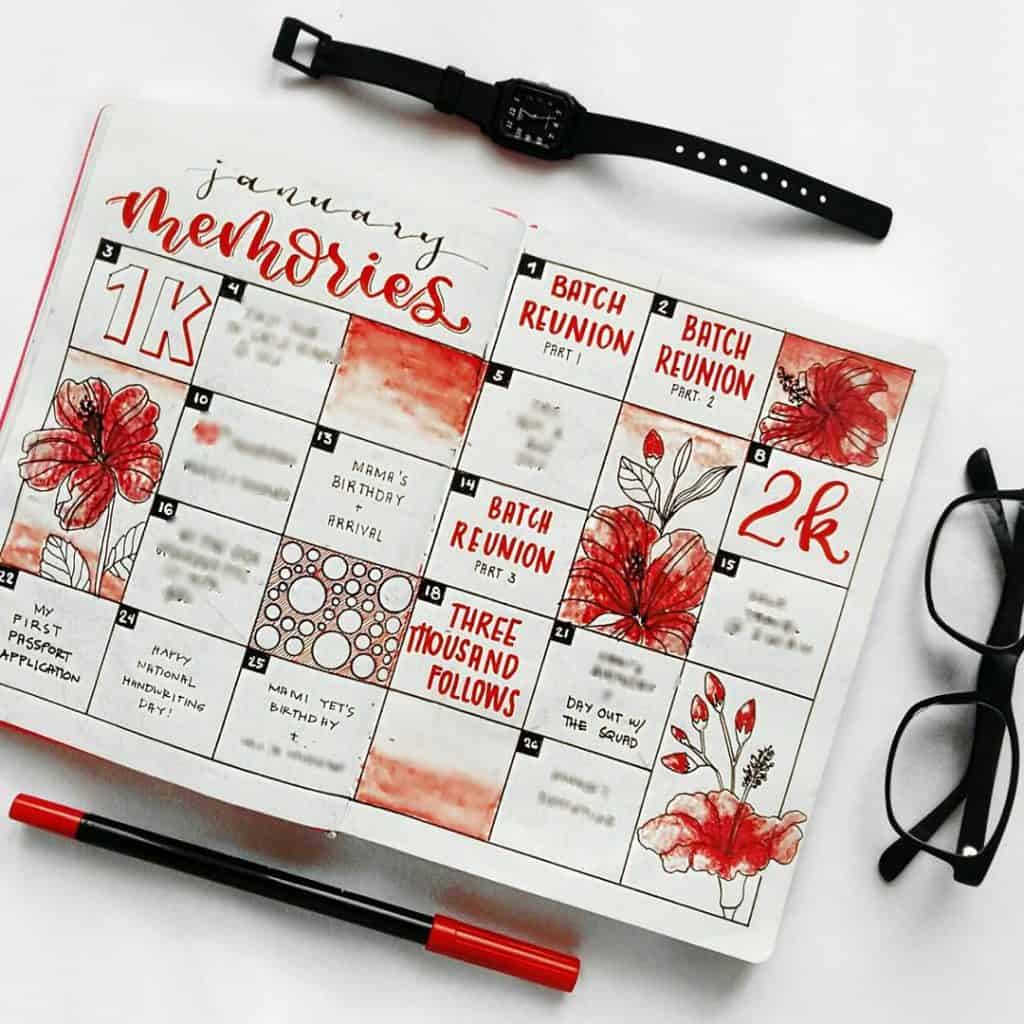
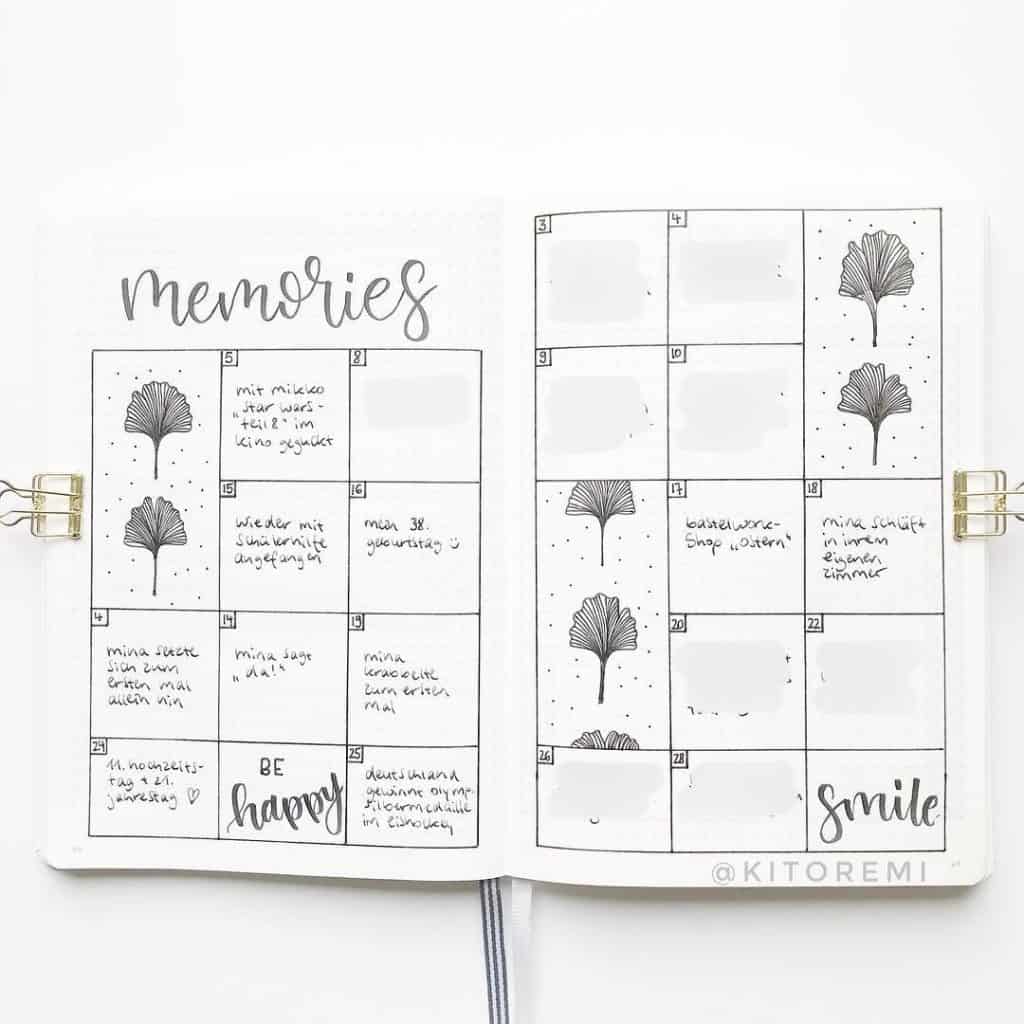
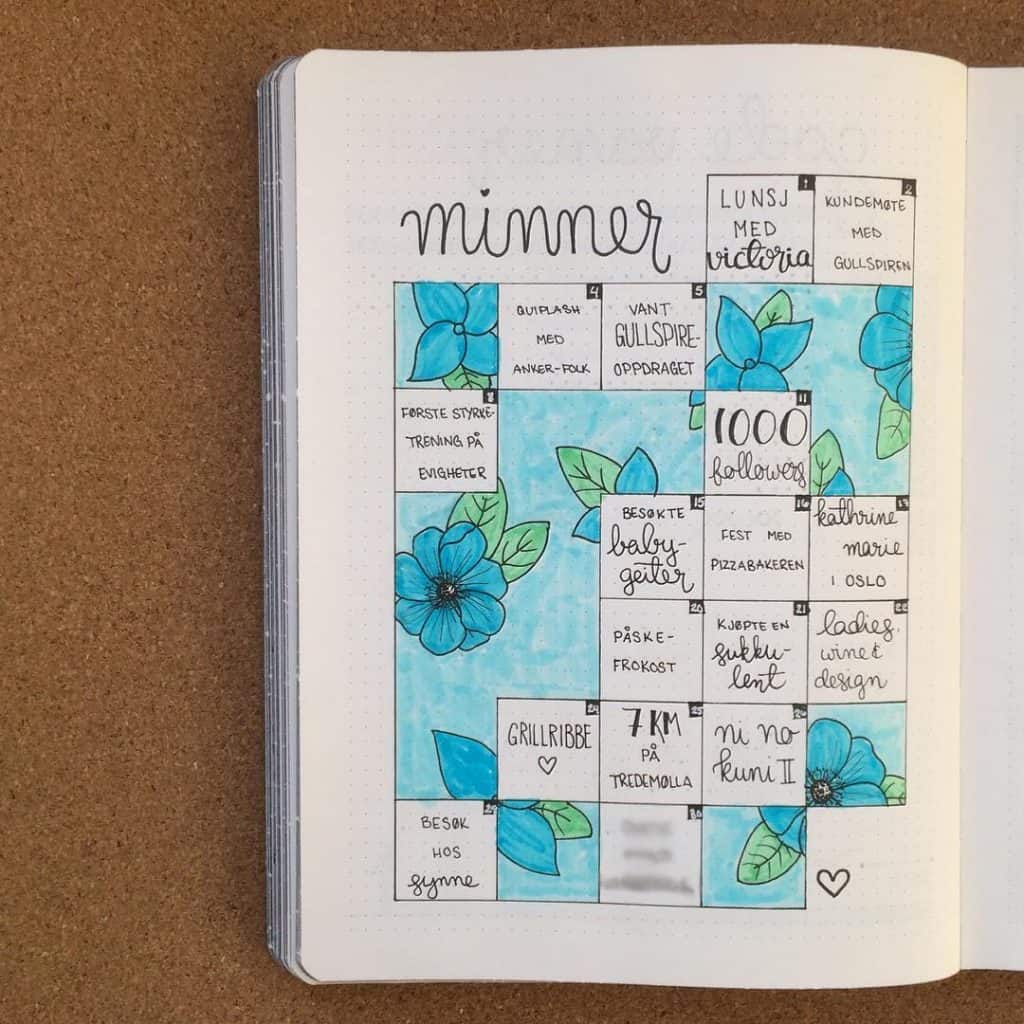
Examples on the fence
Here, someone has posted great content, and because of it, people have replicated it, and some give credit and some do not.
One that sort of sits on the fence for me is this one however; Rose from Rosekjournals created this great cartoon spread, Nina used the spread for inspiration and credited Rose, but then another person used both their inspirations and only after prompting gave credit for the inspiration.
What does copyright infringement look like with bullet journals?
Well this was just unacceptable; as you can see above, Im not in the habit of Naming and Shaming but this was terrible; Jasmine created a gorgeous new spread on her feed back in October; another person recreated it, we posted on her page saying “Oh this is great, did you get inspiration from @studyquill? I love her page too!” she denied it and said there was nothing like it on Jasmines page. Well no, there was. If she had responded with – oh wow! amazing similarity (identical), and not blocked us, it would have been a different story. But flat out denial and blocking someone is pretty clear roof they got caught out in a lie.
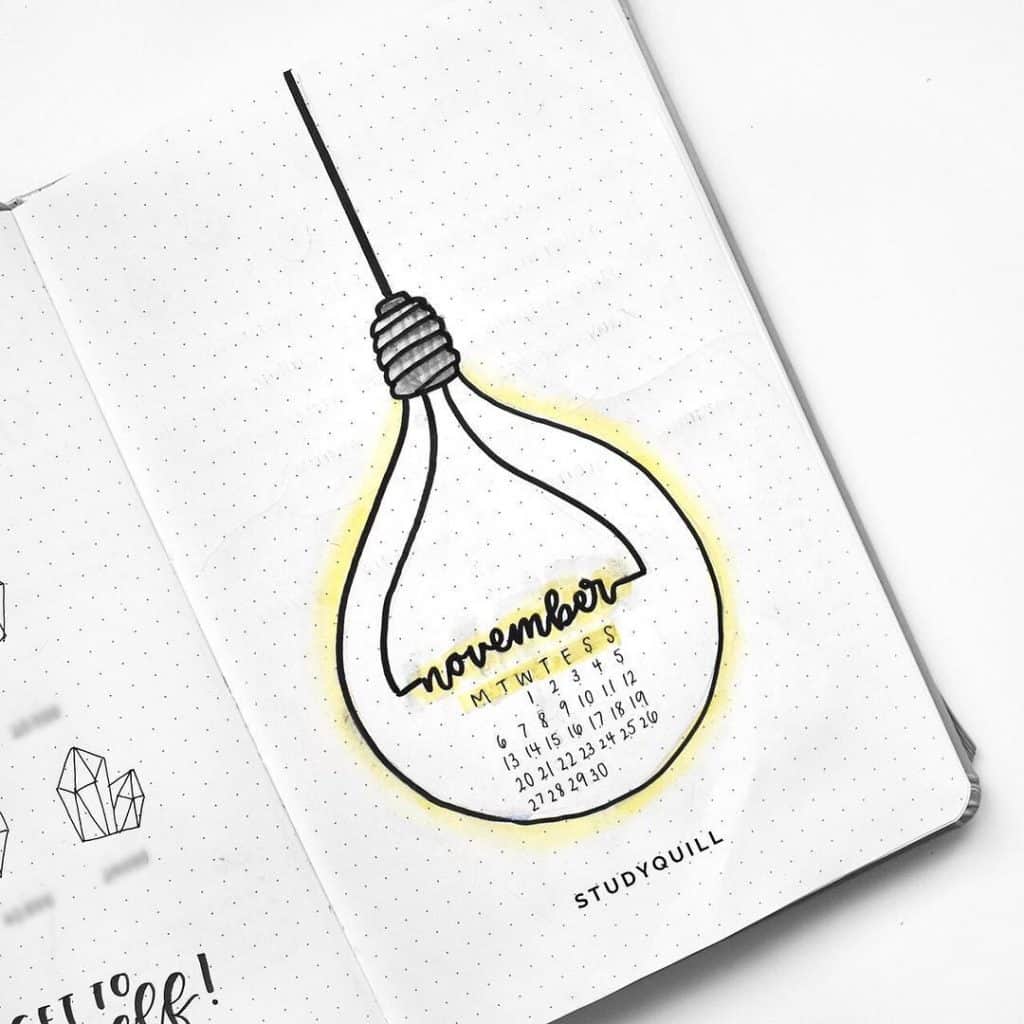
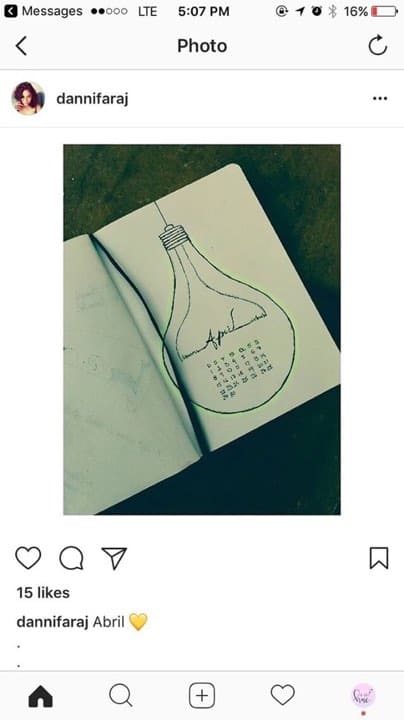
This is one of my favorite spreads of all time, Again the creative Kim makes this incredible spread <3 the below pictures have almost closely replicated the original with the same flowers, placement, colours etc.
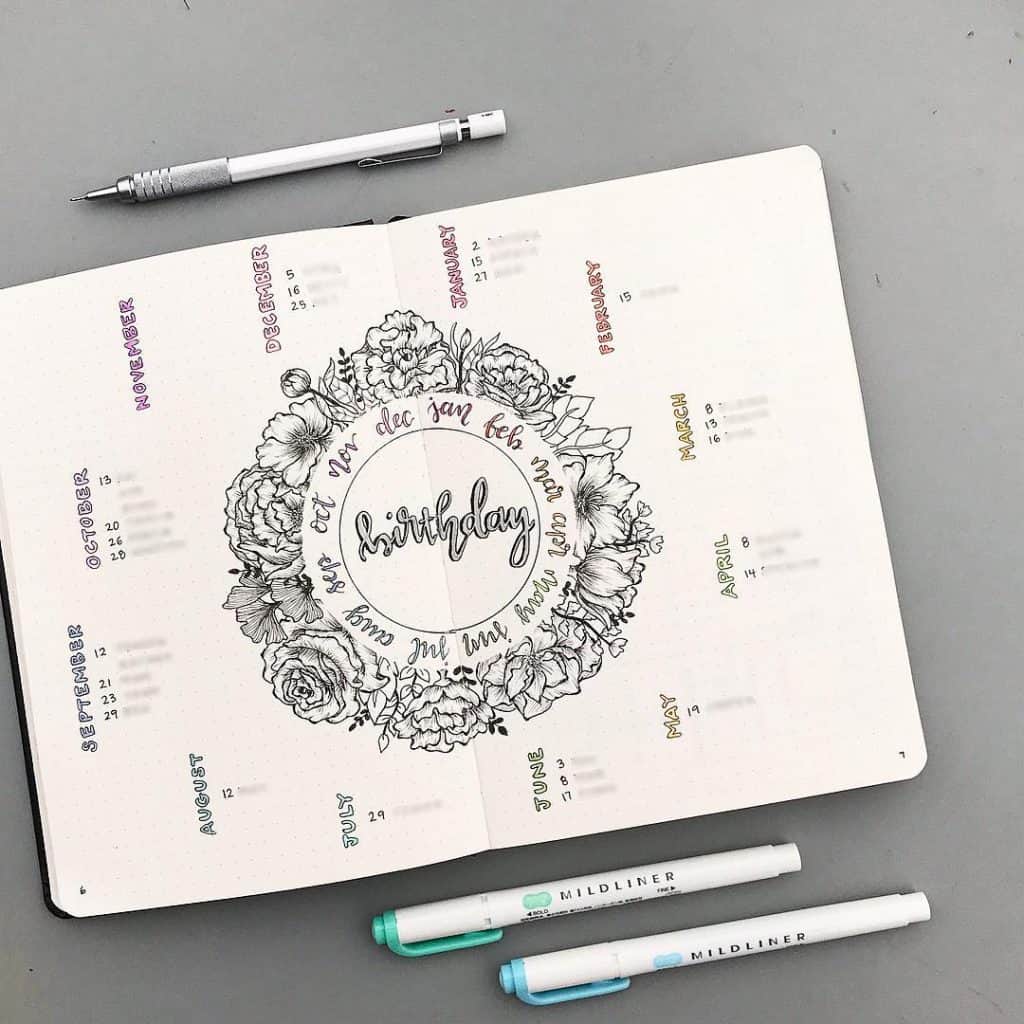
You can see more of these in our flip book/pdf at the top of the post
So please, if anything, let this be a lesson in using the creativity to fuel you creativity is essential, but don’t go being a tool about it. And if someone calls you up about it – dont get defensive, just take it in your stride and either give credit where credit is due or remove the post.
Please feel free to comment below – I think as a community this opens up some great communication and gives us some great tools to go forward with 🙂
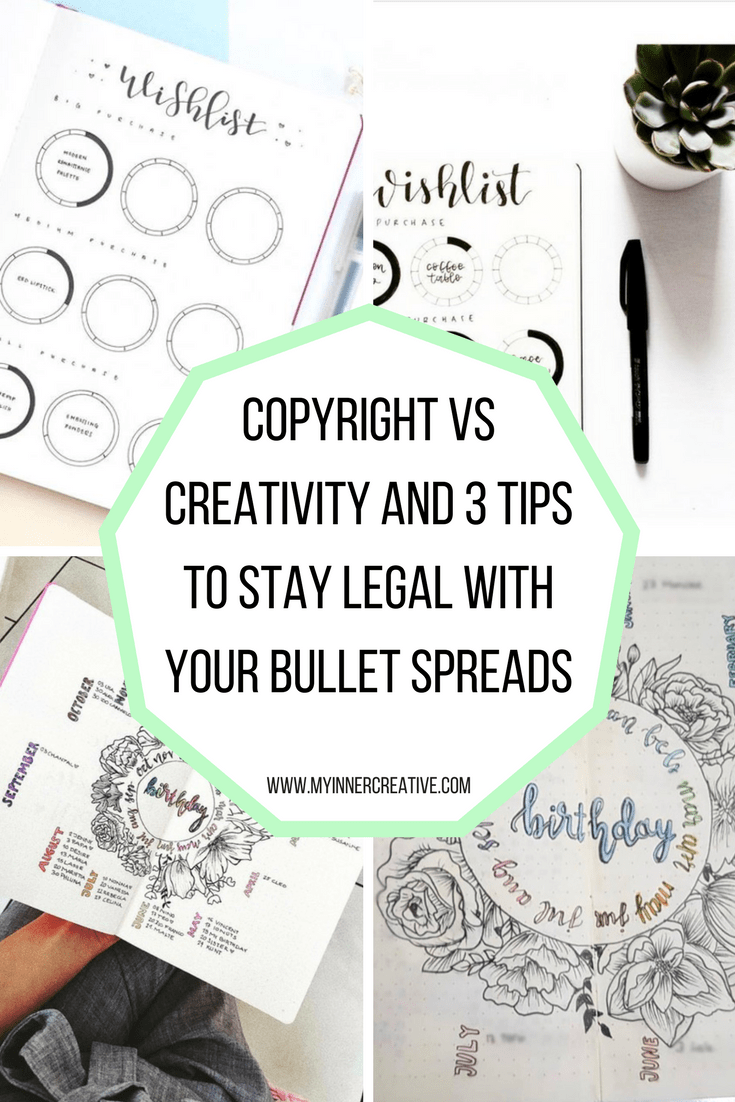

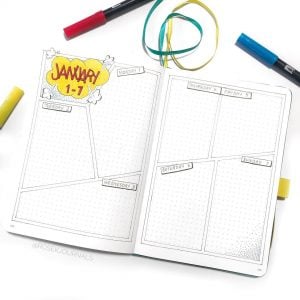

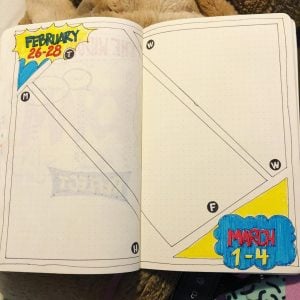
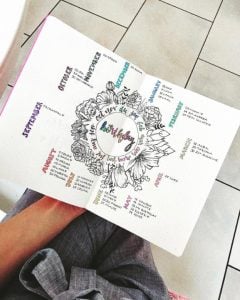
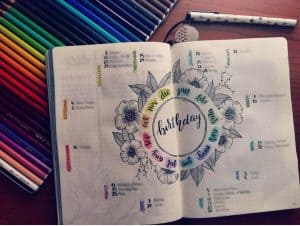
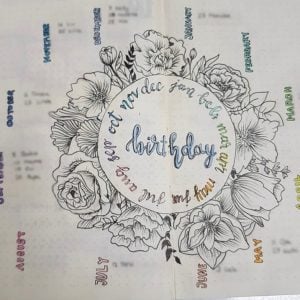
![50+ Examples – Creating the perfect Level 10 Life bullet Journal page – [Free Printable]](https://myinnercreative.com/wp-content/uploads/2018/04/MIC-Blog-Post-Covers-768x768.png)
